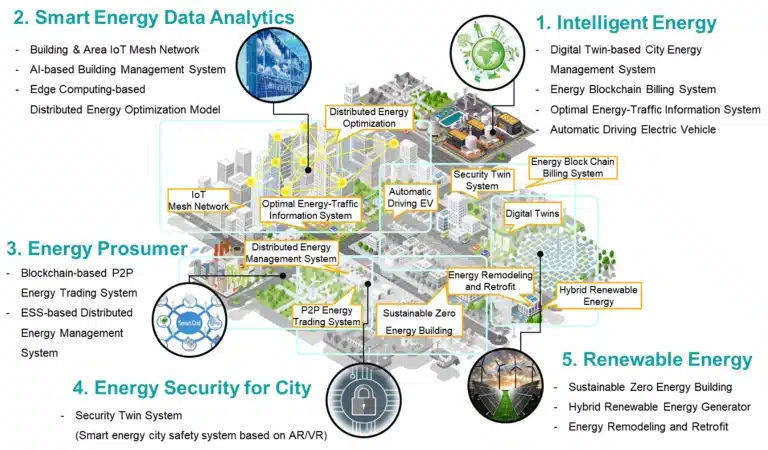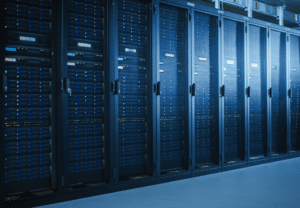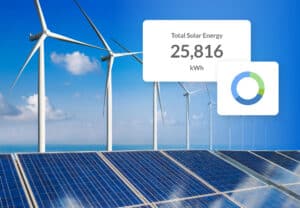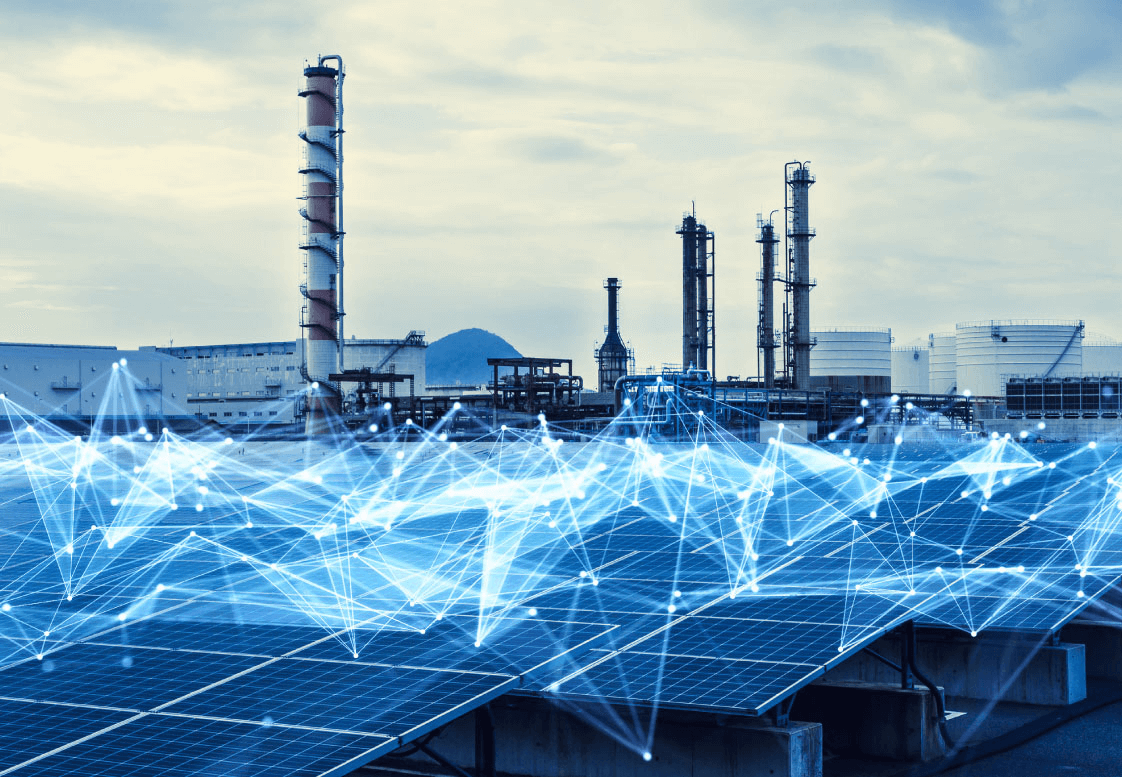
Until recently, smart energy primarily referred to electric grid systems that incorporated IoT and analytics. However, this umbrella term has expanded, and today intelligent systems are used in all major industrial and corporate sectors. According to recent research, sectors such as transportation, power plants, OEMs, telecommunications, and others use data-driven and analytical solutions for intelligent energy management.
Before we dive into how these sectors leverage smart energy as a concept, let us take a step back to understand it on a more fundamental level.
What is Smart Energy?
Smart energy is the intelligent optimization of energy costs and efficiency using innovative technology to build and operate a sustainable energy management system. This is accomplished by integrating artificial intelligence, machine learning, and data analytics technologies into processes using IoT sensors.
They help us collect data on these systems, monitor them, understand waste patterns, load, and other KPIs to optimize energy usage. Furthermore, smart energy integrates and leverages renewable energy sources to develop eco-friendly infrastructures.
But why exactly is smart energy necessary? Let’s find out.
Why is Smart Energy Important?
With the emergence of technologies such as edge computing, big data, and 5G, energy usage across all sectors will increase exponentially. Conventionally power plants, telecom, and other major technology sectors were using energy systems that did not provide insight into energy usage, waste, and distribution.
This ensured a continuous lack of cost and energy efficiency and an increasingly negative environmental impact. Introducing smart energy technologies to traditional energy sources can reduce your remote sites’ energy waste by up to 90%.
To solve these significant challenges, smart energy technologies were introduced. The idea was to make industries function at optimal cost and energy use metrics while having minimal impact on the environment and improving operator’s visibility . Here are a few ways smart energy allows this to be achieved.
Cost Efficiency
This is one of the most significant incentives for businesses and organizations to shift towards smart energy. Smart energy will allow stakeholders to intelligently and actively monitor and manage the energy use of their facilities and assets. It will also optimize those energy sources, especially in the case of renewables, which will reduce energy costs even further. A crucial aspect of succeeding in this area is introducing an IoT-oriented Remote Management and Monitoring (RMM) solution.
Instantaneous Optimization
In Industrial IoT (IIoT) or Industry 4.0, companies carry out their daily operations year-round. This means that the equipment has to function optimally despite the heavy operations load, idle times, varying weather conditions, and fluctuating power.
IIoT optimized solutions can collect data on the energy needs of various machinery and equipment actively throughout the day. The system records the usual idle time and overloads during the day. Based on this, energy distribution and asset management become simpler, thus leading to lesser energy wastage. Optimization improves demand management, reduces maintenance costs, increases asset longevity, and boosts overall labor effectiveness by 20-40%.
Preemptive Outage Management
In the ICT industry, data centers are functional 24/7. Therefore, the administrator must be alerted if there’s any risk of a power outage or equipment failure in advance. Galooli’s solutions provide visibility for these data centers and alerts in real-time to continuity disruptions or malfunctions. This way, preemptive measures can be taken in the event of any disaster or downtime, and operators can potentially predict outages before they occur.
This oversight can also be applied to smart grid systems that tackle energy availability and stability issues. With RMM solutions embedded with AI-enhanced analytics and insights, data can be collected and analyzed to immediately identify an error, send an alert, and easily switch to backup power before a power outage occurs.
Integration of Renewable Energy Sources
While smart energy systems aim to accomplish energy efficiency through AI and machine learning technologies, they also help integrate renewable energy sources. This is important because renewable energy sources can sometimes be intermittent.
When combined with storage solutions such as batteries, intelligent infrastructures can enable more flexibility in managing the supply and demand of energy, and help store excess energy. This way, the systems can help companies shift to renewable energy sources while also leveraging them efficiently.
Reduced Carbon Footprint
Intelligent systems integrated with energy storage solutions can help reduce carbon footprints by 90%. Currently, the global greenhouse gas emissions of the ICT sector alone stands at about 4%.
To curb this, energy management experts like Galooli provide energy and carbon footprint monitoring and analytics. These can help companies track parameters such as carbon intensity, carbon saving, total emissions, and even how much they save from renewable energy use.
These metrics help to understand where the carbon emissions are high and the company’s most polluting sites/departments. With this knowledge, companies can know exactly where they need to make improvements
What are the Use Cases of Smart Energy?
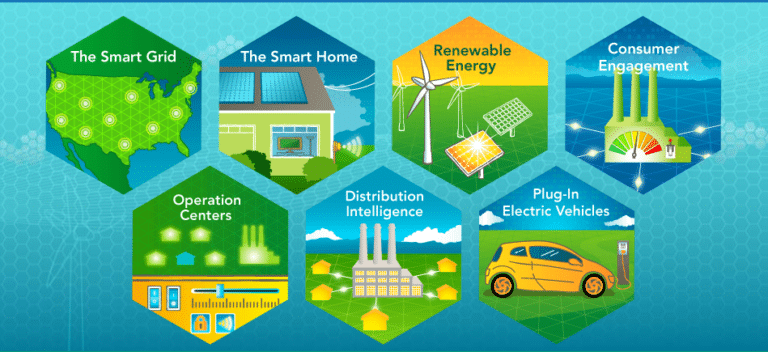
As mentioned at the beginning of this article, smart energy’s implementation has become so widespread that it is useful across almost any industry. However, some of the major sectors that leverage this concept and system are as follows:
- Industrial facilities require optimization of operations using IIoT sensors to reduce costs and ensure that the assets last longer.
- Data centers need continuous monitoring, and RMM solutions can help them execute contingency plans if there’s energy fluctuation or a power outage.
- Power plants can use IoT-integrated systems to optimize energy production and maximize renewables use and energy storage
- Electric vehicles and their charging stations require smart energy systems to reduce their cost, maintenance, and carbon footprint on the planet.
The telecommunications sector is a massive industry that requires smart energy solutions to operate efficiently. With the emergence of 5G, the rate of data usage and number of phone users will continue to grow. By 2025, there will be more than 3.6 billion 5G connections worldwide. The increase in financial and operational costs will make it necessary for companies to monitor their energy usage and use it efficiently.
Shifting to intelligent systems is a difficult task, but Galooli can help businesses and governments make that shift and accomplish their sustainability and energy efficiency goals.
























